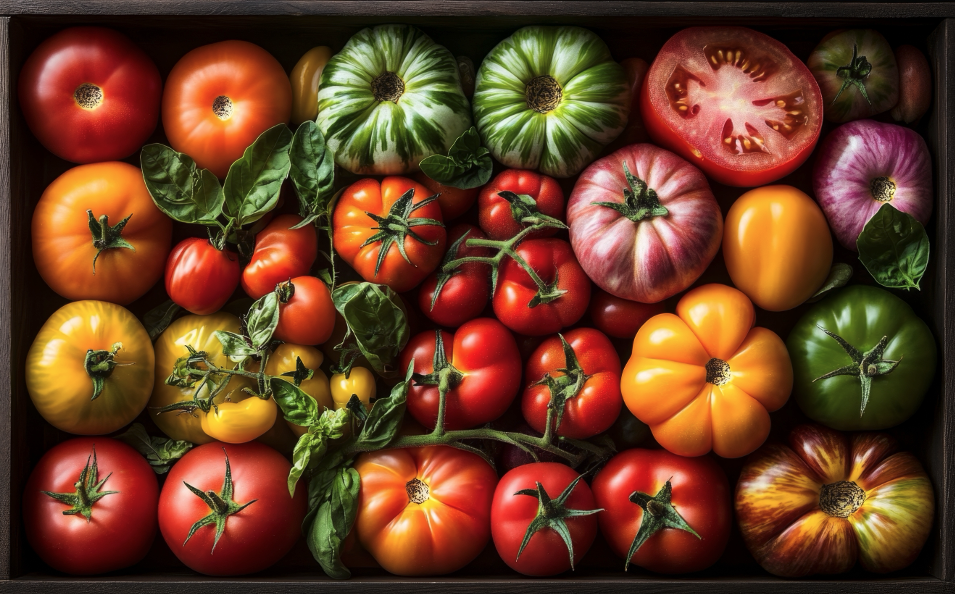Heritage crops, grown from open-pollinated old cultivars, are more than just food—they embody history, culture, and biodiversity (Bessière, 2023; Britwum & Demont, 2022; Preston et al, 2012;). They can strengthen ecosystem resilience by attracting a wide range of pollinators to the agricultural field (Preston et al., 2012) and offer valuable genetic diversity that plant breeders can use to improve future crops (Wincott, 2018).
In the U.S., over 200 heritage foods have been cataloged by Slow Food USA (Slow Food USA, 2024). Among them, nearly 100 are originated from the Southeastern U.S. Examples include Carolina Gold rice, Sea Island red peas, and Green Glaze collards. Southeastern states such as Georgia, South Carolina, Louisiana, and Alabama have long traditions of growing heritage specialty crops, many of which thrive in the warm and humid conditions characteristic of the region.
Despite their cultural and ecological value, heritage crops can be more costly to grow than modern alternatives. Growers may require a price premium for this to be a profitable crop production choice. A recent national consumer survey indicates that over half of U.S. consumers are either unaware or only slightly aware of heritage varieties (Figure 1). Importantly, when we isolate responses from the Southeastern U.S., consumer awareness is similar to the national average, suggesting a critical challenge to preserve heritage crops through market‐based conservation strategies. Americans show a moderate willingness to pay a premium for heritage rice and tomato, while they are less inclined to pay more for heritage apple, cabbage, and squash (Nian et al., 2025). To safeguard these crops, integrated strategies are essential:
- Consumer education campaigns should highlight the cultural heritage, nutritional benefits, and environmental contributions of these crops—especially in Southern states where traditional foodways remain strong.
- Geographic indication labeling can help Southern growers develop place-based branding (e.g., “Carolina Golden Rice” or “Appalachian Beans”) that commands higher market value.
- Public investment in regional seed conservation, grower support networks, and direct-to-consumer marketing can reduce risk and increase profitability for producers willing to diversify with heritage crops.
In summary, heritage crops represent a unique opportunity for the Southern U.S. to lead in place-based sustainable agriculture that honors the past while preparing for the future. By bridging the gap between tradition and innovation, we can ensure that heritage crops remain a vibrant part of the U.S. agricultural future.
Figure 1. US consumers’ knowledge of heritage crops

References
Bessière, J. (2013). ‘Heritagisation’, a challenge for tourism promotion and regional development: an example of food heritage. Journal of Heritage Tourism, 8(4), 275-291. https://doi.org/10.1080/1743873X.2013.770861.
Britwum, K., & Demont, M. (2022). Food security and the cultural heritage missing link. Global Food Security. 35, 100660. https://doi.org/10.1016/j.gfs.2022.100660.
Nian, Y., Lamie, R.D., Vassalos, M., Tregeagle, D., Boyles, B., & Vossbrinck, D. (2025). A diamond in the rough: Identifying heritage crop niche markets in the U.S. using a discrete choice experiment. Agricultural Economics. https://doi.org/10.1111/agec.70043.
Preston, J. M., Maxted, N., Sherman, R., Munro, N., & Ford-Lloyd, B. V. (2012). What’s in a name: a closer look at heritage variety definition. In Agrobiodiversity conservation: Securing the diversity of crop wild relatives and landraces (pp. 152-160). Wallingford UK: CABI. https://doi.org/10.1079/9781845938512.0152.
Slow Food USA. (2024). Ark of Taste | Slow Food USA. https://slowfoodusa.org/ark-of-taste/.
Wincott, A. (2018). Treasure in the vault: The guardianship of ‘heritage’ seeds, fruit and vegetables. International Journal of Cultural Studies, 21(6), 627-642. https://doi.org/10.1177/1367877917733541.
Nian, Yefan, Daniel Tregeagle, Dave Lamie, and Michael Vassalos. “Preserving America’s Heritage Crops: Low Consumer Awareness Makes Market-Based Conservation Challenging.” Southern Ag Today 5(28.5). July 11, 2025. Permalink


